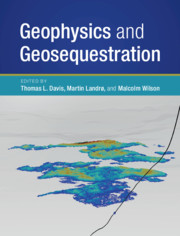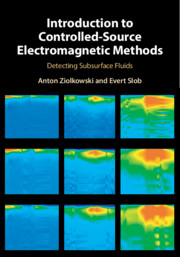Refine listing
Actions for selected content:
1211 results in Ebooks in petroleum sciences

Geophysics and Geosequestration
-
- Published online:
- 19 April 2019
- Print publication:
- 09 May 2019

Introduction to Controlled-Source Electromagnetic Methods
- Detecting Subsurface Fluids
-
- Published online:
- 16 April 2019
- Print publication:
- 07 March 2019
9 - Plane Waves in Anisotropic Media
-
- Book:
- Seismic Wave Theory
- Published online:
- 15 March 2019
- Print publication:
- 28 March 2019, pp 294-311
-
- Chapter
- Export citation
Symbols
-
- Book:
- Seismic Wave Theory
- Published online:
- 15 March 2019
- Print publication:
- 28 March 2019, pp xv-xvi
-
- Chapter
- Export citation
Index
-
- Book:
- Seismic Wave Theory
- Published online:
- 15 March 2019
- Print publication:
- 28 March 2019, pp 344-350
-
- Chapter
- Export citation
Answers to Selected Exercises
-
- Book:
- Seismic Wave Theory
- Published online:
- 15 March 2019
- Print publication:
- 28 March 2019, pp 334-337
-
- Chapter
- Export citation
References
-
- Book:
- Seismic Wave Theory
- Published online:
- 15 March 2019
- Print publication:
- 28 March 2019, pp 338-343
-
- Chapter
- Export citation
2 - Stress, Strain, and Seismic Waves
-
- Book:
- Seismic Wave Theory
- Published online:
- 15 March 2019
- Print publication:
- 28 March 2019, pp 51-111
-
- Chapter
- Export citation
Frontmatter
-
- Book:
- Seismic Wave Theory
- Published online:
- 15 March 2019
- Print publication:
- 28 March 2019, pp i-iv
-
- Chapter
- Export citation
3 - Reflection and Transmission of Plane Waves
-
- Book:
- Seismic Wave Theory
- Published online:
- 15 March 2019
- Print publication:
- 28 March 2019, pp 112-151
-
- Chapter
- Export citation
Preface
-
- Book:
- Seismic Wave Theory
- Published online:
- 15 March 2019
- Print publication:
- 28 March 2019, pp xiii-xiv
-
- Chapter
- Export citation
Contents
-
- Book:
- Seismic Wave Theory
- Published online:
- 15 March 2019
- Print publication:
- 28 March 2019, pp vii-xii
-
- Chapter
- Export citation
6 - Data Transformations
-
- Book:
- Seismic Wave Theory
- Published online:
- 15 March 2019
- Print publication:
- 28 March 2019, pp 230-241
-
- Chapter
- Export citation
10 - Plane Waves in Anelastic Media
-
- Book:
- Seismic Wave Theory
- Published online:
- 15 March 2019
- Print publication:
- 28 March 2019, pp 312-333
-
- Chapter
- Export citation
4 - Surface Waves, Head Waves, and Normal Modes
-
- Book:
- Seismic Wave Theory
- Published online:
- 15 March 2019
- Print publication:
- 28 March 2019, pp 152-186
-
- Chapter
- Export citation
Dedication
-
- Book:
- Seismic Wave Theory
- Published online:
- 15 March 2019
- Print publication:
- 28 March 2019, pp v-vi
-
- Chapter
- Export citation
1 - Vectors, Tensors, and Fourier Transforms
-
- Book:
- Seismic Wave Theory
- Published online:
- 15 March 2019
- Print publication:
- 28 March 2019, pp 1-50
-
- Chapter
- Export citation
7 - Synthetic Seismograms
-
- Book:
- Seismic Wave Theory
- Published online:
- 15 March 2019
- Print publication:
- 28 March 2019, pp 242-269
-
- Chapter
- Export citation
8 - Seismic Migration
-
- Book:
- Seismic Wave Theory
- Published online:
- 15 March 2019
- Print publication:
- 28 March 2019, pp 270-293
-
- Chapter
- Export citation
5 - Waves in Heterogeneous Media
-
- Book:
- Seismic Wave Theory
- Published online:
- 15 March 2019
- Print publication:
- 28 March 2019, pp 187-229
-
- Chapter
- Export citation
